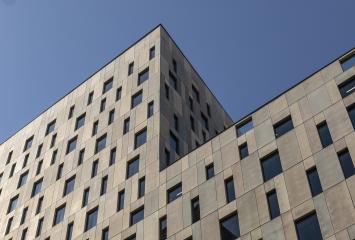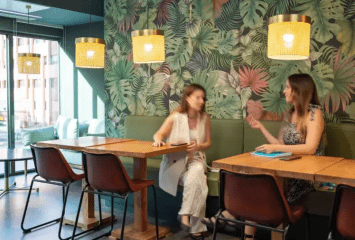Colonial's No. 1 Commitment Under its Sustainability Charter is the Reduction of Energy Intensity
At Colonial, we have always been fully committed to environmental sustainability. And this has mainly resulted in two actions: the development of a Sustainability Charter, and the establishment in 2020 of a Sustainability Committee to monitor the properties we own and ensure compliance with the charter's principles. The first of these principles, which we will be discussing here, concerns a 10% reduction of energy intensity within these properties by 2030. This is in line with the Paris Agreement objectives, which are crucial to mitigating man-made climate change.
Measures Taken to Reduce Energy Consumption
Reducing energy intensity is one of the two ways we can lower the associated emission of greenhouse gases. The other is to replace energy that is produced from contaminating fossil fuels with clean renewable green energy, which is another of our charter principles that we will discuss on another occasion. Returning to the question of reduction, at the Colonial Group we have established and implemented a series of specific measures for this purpose, which are largely responsible for the fact that 95% of our portfolio of offices in operation hold official sustainability certificates.
These measures include replacing air conditioning systems with more efficient alternatives, improving the control of automated building processes by installing advanced management systems such as PropTech 2.0, committing to LED lighting and more efficient lighting-control systems, and installing solar panels to produce energy for our own consumption. All of this has a dual impact: reducing energy intensity and carbon dioxide emissions. Many of the sustainability measures we take at Colonial cover a variety of environmental principles.
Current Status at Colonial of the energy intensity rate
In 2018, our plan at Colonial was to meet some our own sustainability goals by 2050, but the progress of both the Sustainability Committee and the company overall made it possible to move that date up to 2030 for many of them. This was the case with the target for reducing energy intensity. According to the statistics from 2021, the last full financial year, the intensity of energy consumption on our properties dropped 3% with respect to 2019, during the pre-COVID period. The predictions for the future are very favorable. They encourage us to continue with this approach.
Buildings in the Colonial Portfolio that Exemplify this Principle
The 3% reduction in the intensity of energy consumption is an average. Ultimately, each building we acquire has unique features that can make it easier or harder to achieve this goal. At Colonial we assess the potential energy efficiency of office buildings before acquiring them to ensure minimum progress in sustainability. Some buildings stand out among others because of the opportunities they offer in this regard. Sometimes because of their location. Sometimes because of the materials with which they are built. And other times because of special characteristics of their design.
One such example is Wittywood. This office building was the first in Spain to be built of solid wood, which reduces the average energy intensity rate of our properties overall because of its thermal insulation capacity. Torre Marenostrum is another example. Its large windows, which define the entire building and ensure continuous sunlight in the interior, reduce dependence on electricity and heating. Sant Cugat Nord and Illacuna, both of which have a Building Management System, are other examples of especially efficient properties.
Colonial has only just started down the path to full sustainability, but we have already come a long way. We will continue to implement solutions and technologies that further reduce the intensity of energy consumption in our office buildings and to invest in new properties based on our commitment to sustainability. In the next installment of this series, focusing on the principles set out in the Sustainability Charter, we will discuss our goal of reducing our carbon footprint by more than 75%, which places us among the most ambitious European real estate companies in terms of environmental protection.

